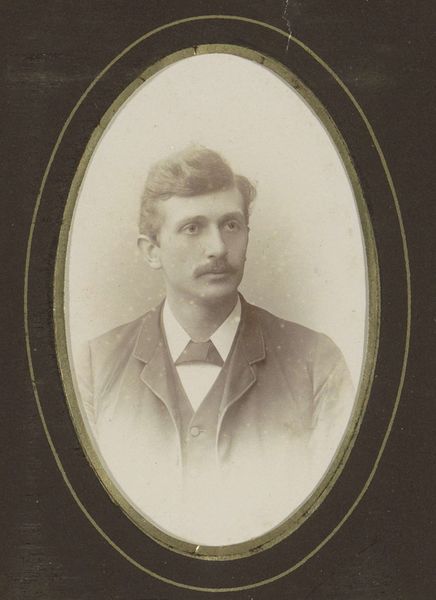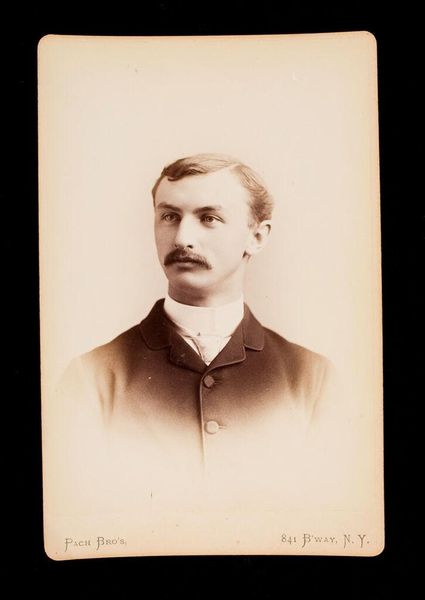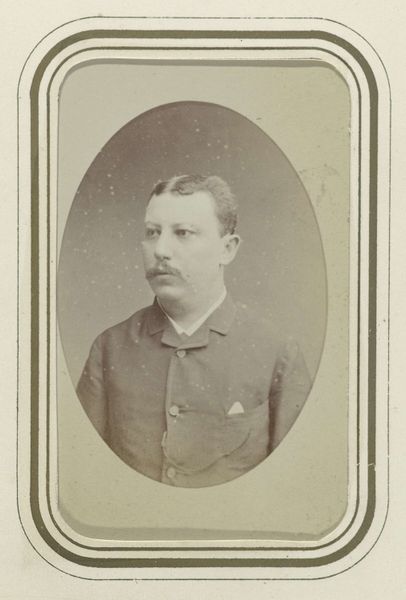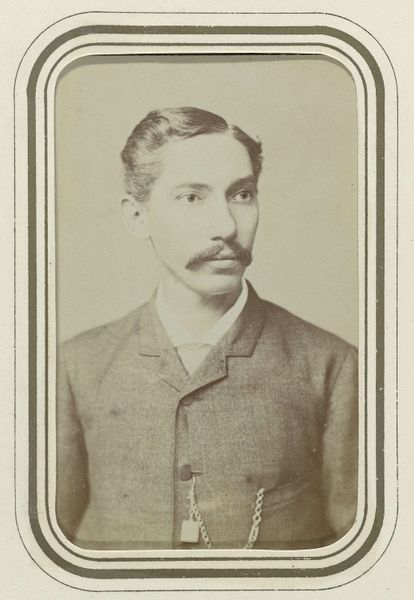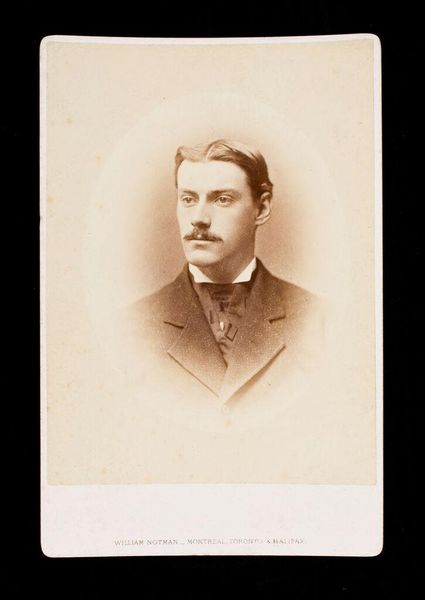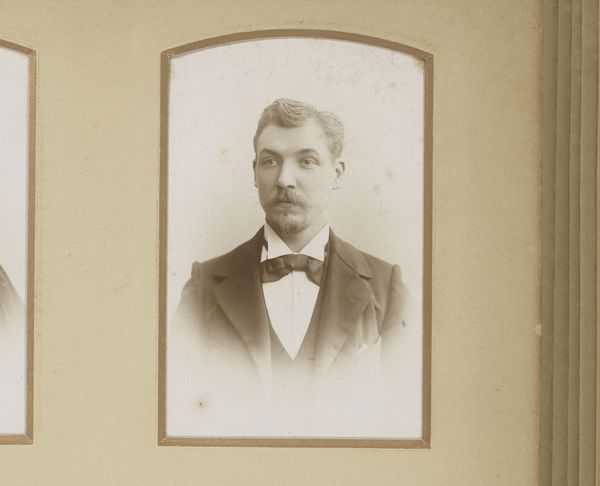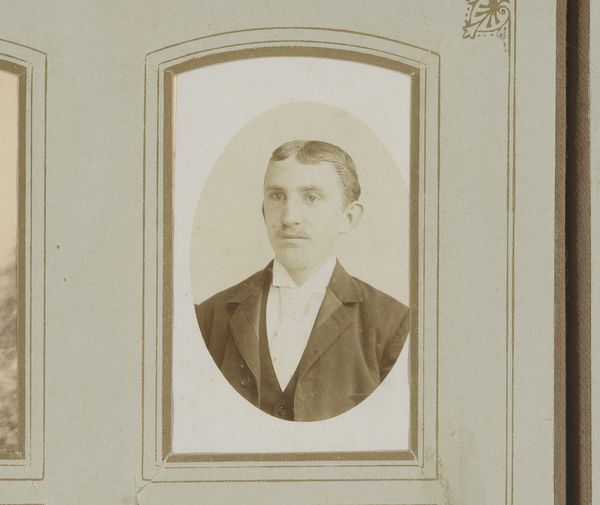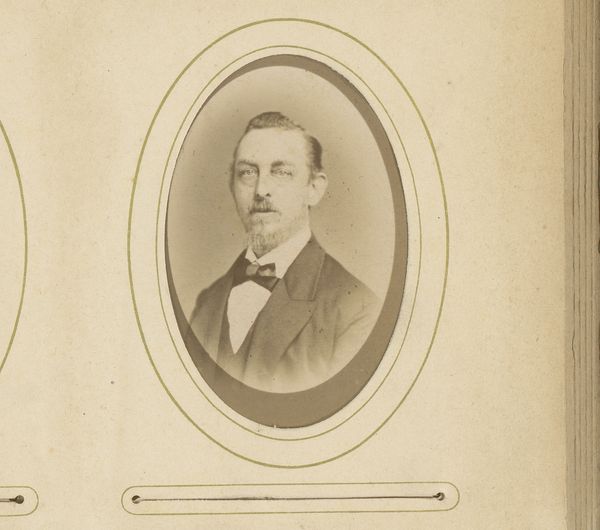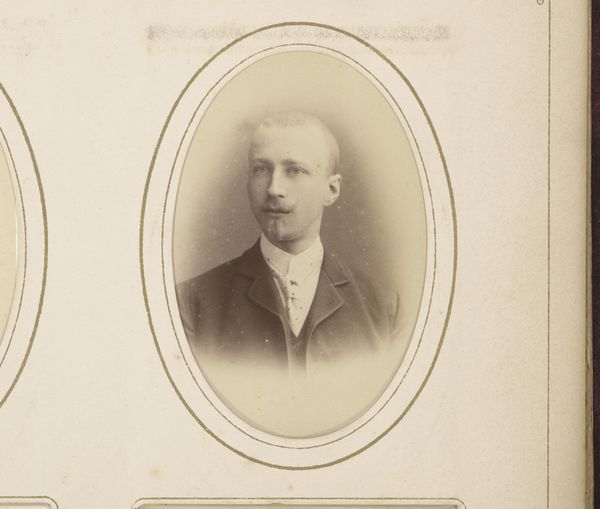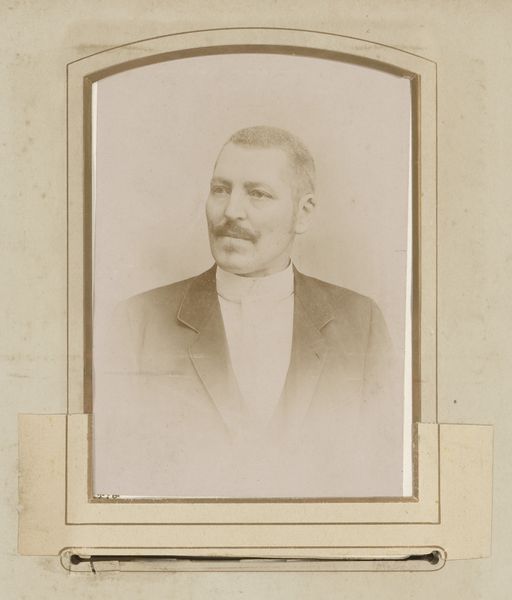
print, photography, albumen-print
#
portrait
# print
#
photography
#
albumen-print
#
realism
Dimensions: height 97 mm, width 63 mm
Copyright: Rijks Museum: Open Domain
Curator: What a compelling image! We’re looking at a portrait from around 1870 to 1900. The artwork, possibly of a man named ‘MC van Essen’, is rendered through the albumen print process. Editor: My first thought? The muted sepia tones create a sense of formality, yet the slightly askew glance of the sitter adds an interesting layer of humanity. There’s an appealing textural quality to the man's coat. Curator: Absolutely, and that “humanity,” as you put it, likely owes itself to photography’s democratization of portraiture during this period. The image suggests a burgeoning middle class eager to participate in visual culture. The studio portrait was, at the time, a powerful signifier of social standing. Editor: The composition strikes me as deliberate, if conventional. The oval frame contains and directs our gaze, focusing attention squarely on the sitter's face. Observe the subtle interplay of light and shadow modeling the contours of his features; note the slight tension in the eyes and jawline. Curator: Interesting point regarding this alleged tension! Looking at similar portraits from that era reveals the tension, in my interpretation, stems from the sitter’s long time in front of the camera, waiting to have the photograph taken. While photography aimed for "realism," it remained governed by distinct performance rituals influenced by broader class structures and aesthetics. Editor: Agreed, although I think those practicalities and the sitter’s presumed performance still manifest as compositional elements in the artwork as it survives for us today. Looking more closely, his tie knot is also off-center, creating a slight imbalance, drawing attention to the otherwise careful attire. I like this disruptive informality! Curator: Indeed, perhaps reflective of a subtle challenge to societal norms? These studio shots were incredibly powerful visual messages sent throughout the social landscape. Thanks for providing an insightful formal analysis of a work that really transports me to its historical moment! Editor: And thank you for expanding my understanding through historical context. Seeing these techniques employed not just for the artistic, but for social statements, changes everything.
Comments
No comments
Be the first to comment and join the conversation on the ultimate creative platform.
